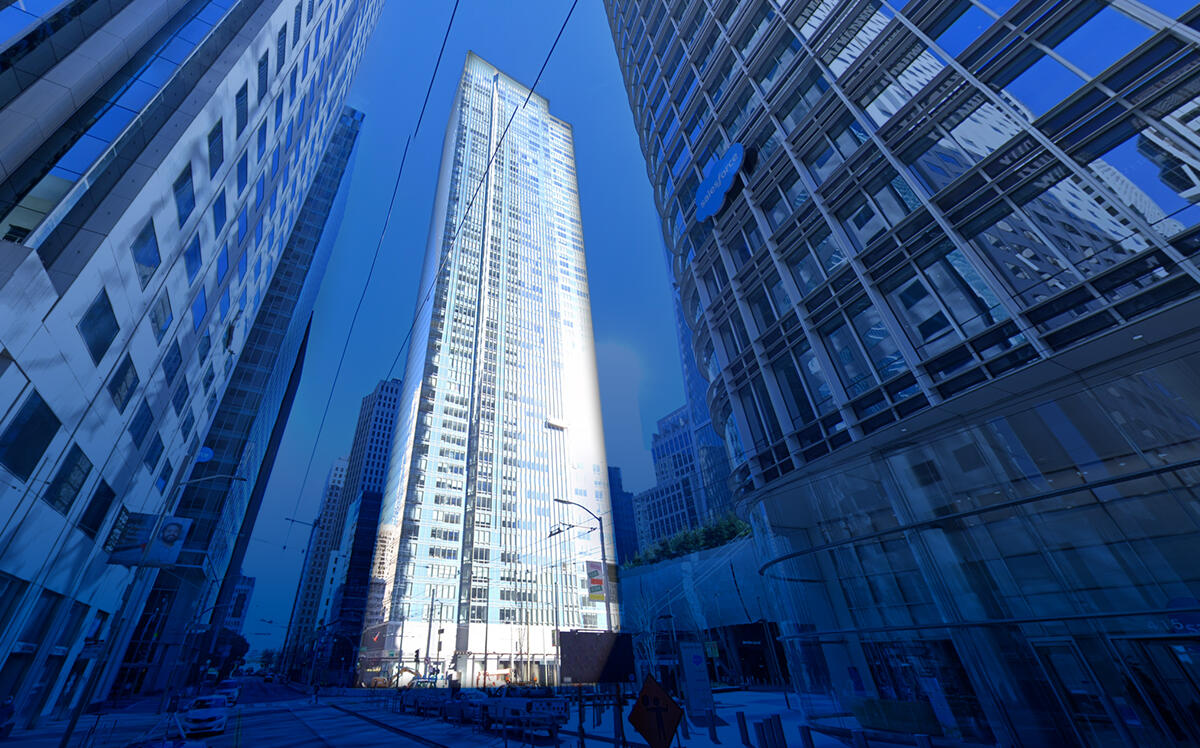San Francisco’s Millennium Tower — colloquially known as the city’s “leaning tower” — has sunk another inch into the ground and tilted another five inches to the northwest since work began in May to shore up its foundation. In response, its homeowners’ association has put that work on hold for at least the next two weeks as engineers try to address the high-rise’s issues.
When foundation work started in May, the 58-story building had already sunk at least 18 inches into the ground and was tilting just over 17 inches to the northwest, according to a report published earlier this week by NBC Bay Area.
However, as of mid-August, monitoring data obtained by NBC’s investigative unit showed that the tower’s foundation had sunk a full inch since May, when construction crews began drilling two- and three-foot-wide holes lined with steel sleeves about 100 feet into the ground. Once those crews had finished creating 52 such holes, they would fill them with piles — steel-and-concrete columns — intended to anchor Millennium Tower to a level of bedrock 250 feet below the ground. The new bedrock-supported foundation would then be attached to the original one, which was built into a bed of soft clay above the bedrock, in an attempt to allow the building to level itself over time and halt its sinking.
So far, construction workers have installed 39 of the project’s 52 piles, but that work has further exacerbated its sinking issues, NBC Bay Area’s report indicates. The tower is now leaning five more inches to the northwest since construction started in May, the report said.
The homeowners’ association told residents on Monday that further pile installation would be put on hold for the next two to four weeks in light of an “increased risk of settlement,” or sinking, NBC reported. The move was made out of an “abundance of caution” and there has been no material harm to the building, which remains “fully safe,” the association reportedly told residents.
In a July 29 email to San Francisco’s Department of Building Inspection that was obtained by the San Francisco Business Times, an engineering design review team that has been monitoring Millennium Tower’s foundation repair work suggested three factors that have contributed to its further sinking: soil displacement, densification of a sand layer below the tips of the existing piles due to vibrations associated with the installation of new piles, and over-excavation.
A spokesman for the homeowners association told the San Francisco Chronicle this week that the association will use the next two to four weeks to try to “understand better the mechanisms associated with the increased settlement rate and available means of mitigating this.”
Completed in 2009 and located at 301 Mission St., Millennium Tower contains 419 luxury condominium units and was reportedly the most expensive residential project in San Francisco’s history. In August 2016, its residents filed a class-action lawsuit against the building’s developer, Millennium Partners, claiming that it knew about its sinking problem as far as back as 2008. That sparked a slew of lawsuits involving, among others, the City of San Francisco, former NFL quarterback Joe Montana, and Webcor, which built the high-rise on behalf of Millennium Partners.
All of those suits were settled last year as part of a confidential agreement that compensated condominium owners for value lost due to the building’s construction issues. That agreement also stipulated that 52 piles be used to reinforce its foundation, part of a two-year, $100-million project intended to fix its sinking and leaning issues. The project was initially slated to wrap up sometime next year, although it’s now unclear whether that’s still going to happen.
[NBC Bay Area] — Matthew Niksa
